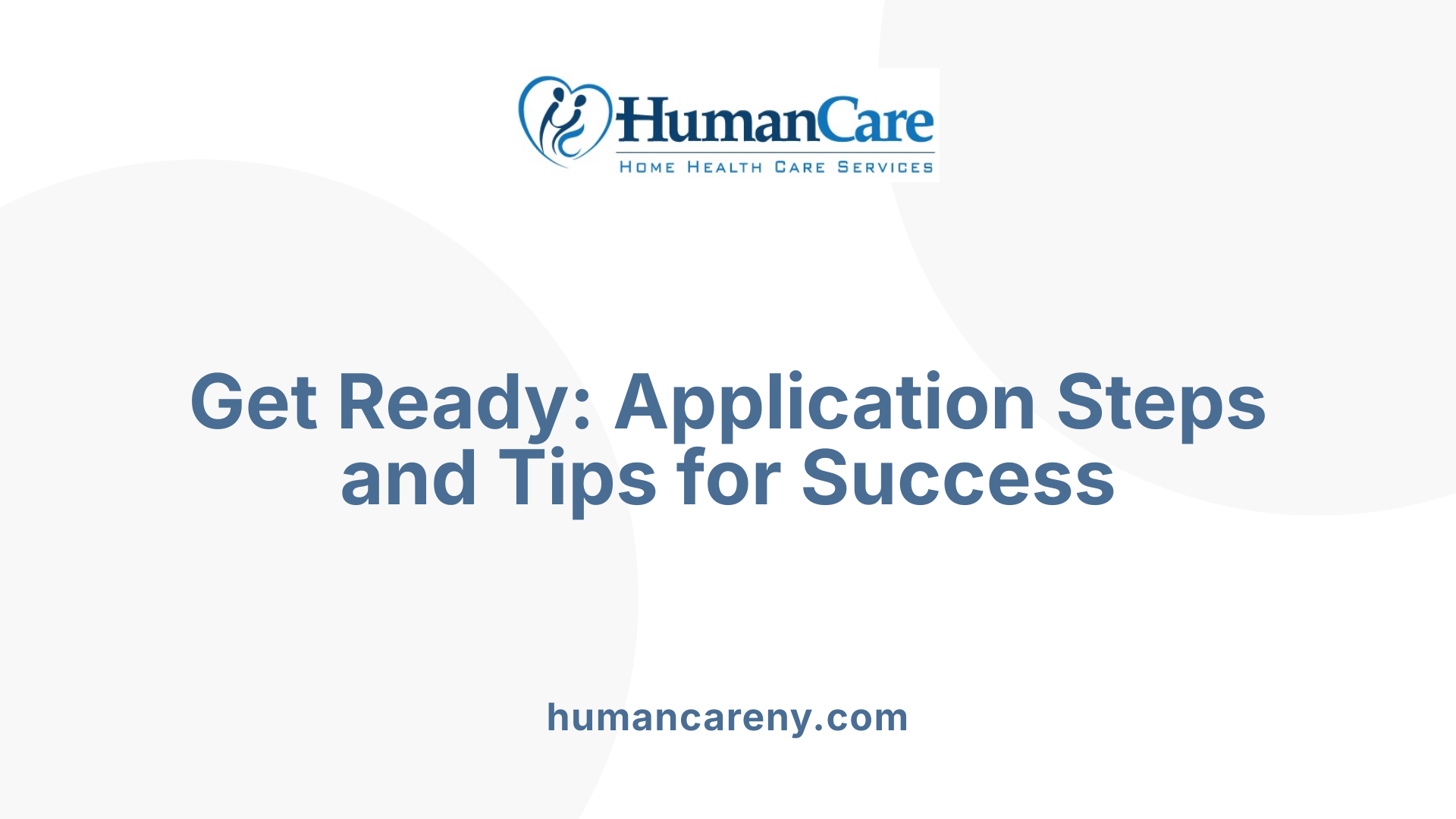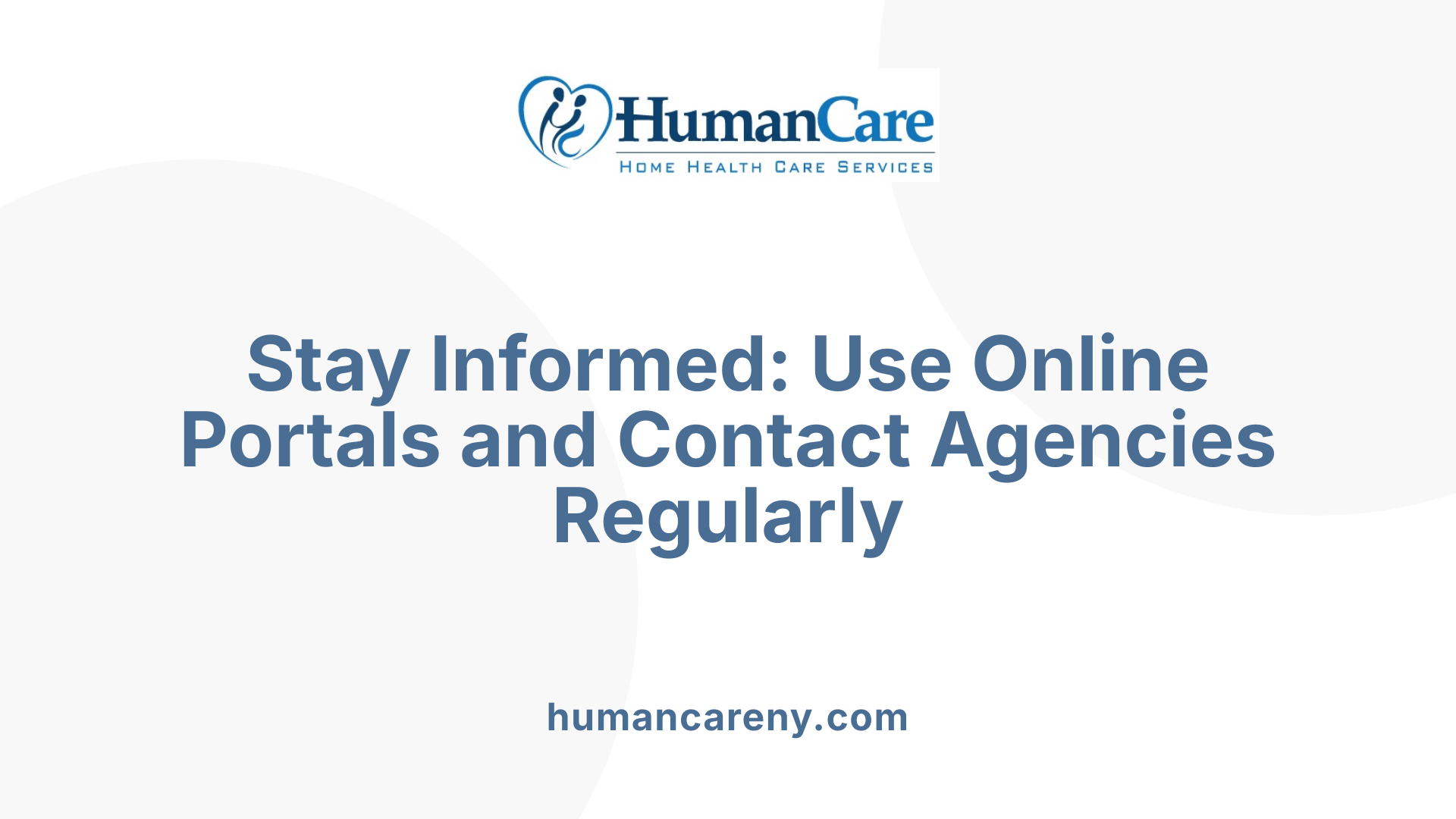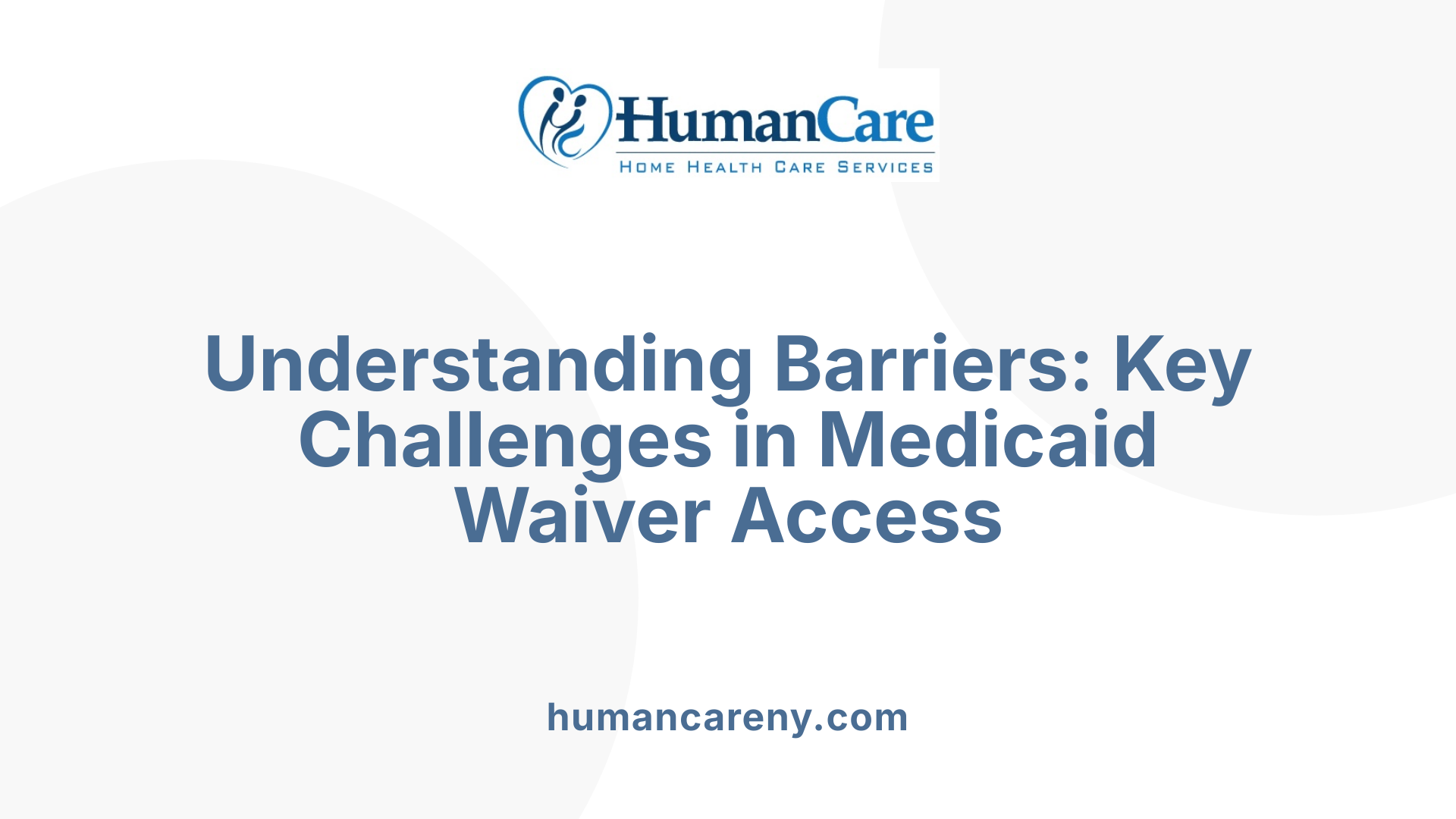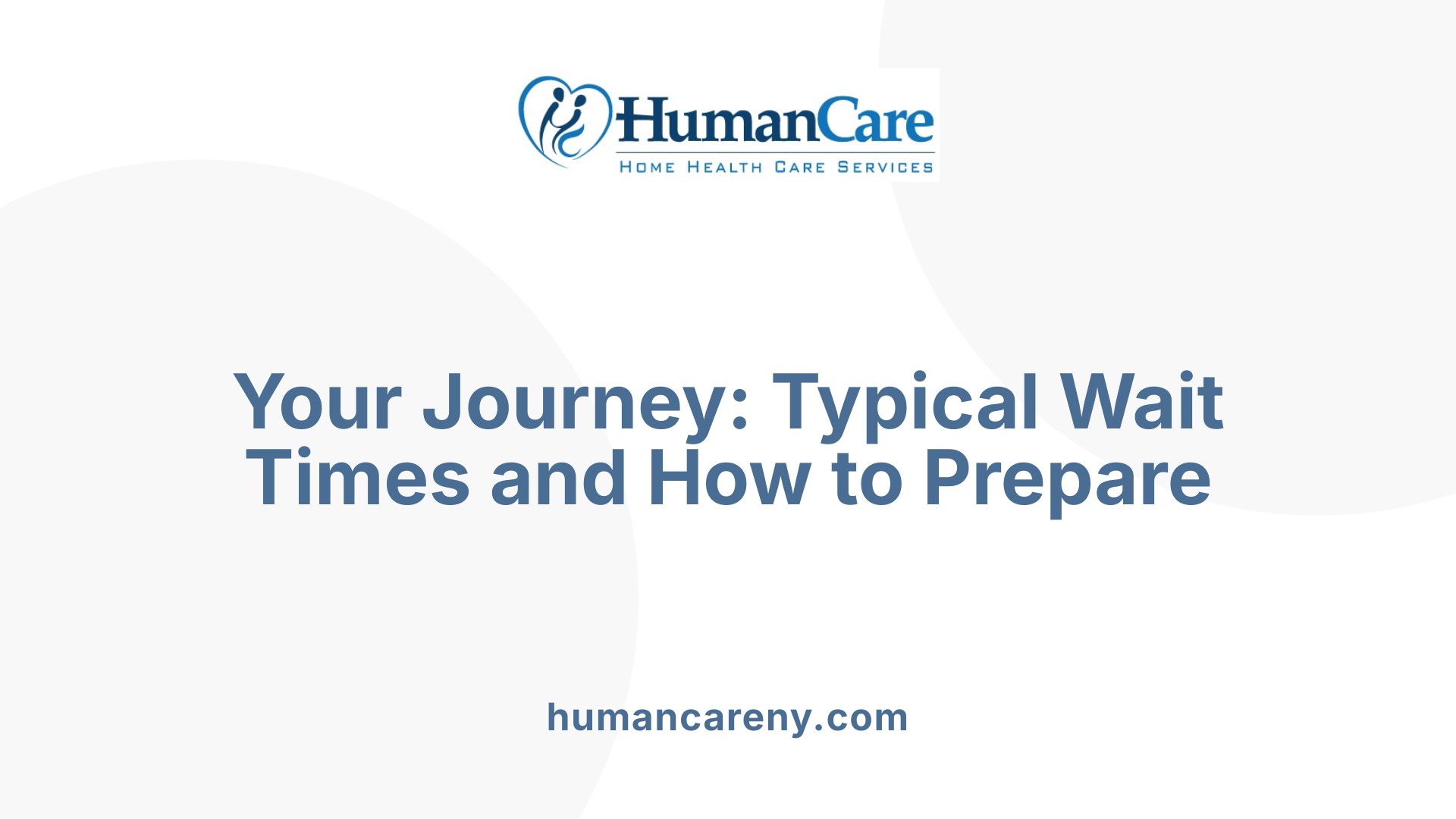An Essential Guide to Understanding Medicaid Waiver Waitlists and Timelines
Medicaid waiver programs are vital for providing long-term, community-based care for individuals with disabilities and those needing assisted living. However, the process of applying, waiting, and receiving services can be complex and varies significantly across states. This article offers a comprehensive overview of how Medicaid waiver waiting lists operate, the typical waiting times, factors influencing these timelines, and strategies for applicants to navigate the system effectively.
Operational Mechanics of Medicaid Waiver Waiting Lists
How do Medicaid waiver waiting lists operate and how are they managed?
Medicaid waiver waiting lists function as organized systems designed to handle the demand for long-term care services that exceed available supply. These lists are managed by state agencies, which prioritize applicants based on multiple criteria. Common factors influencing prioritization include the urgency of the person's needs, their health status, the length of time already spent on the list, and specific categories like transitioning from nursing homes or hospitals.
Many states arrange these lists regionally or by service type to ensure equitable and needs-based distribution. For instance, some states utilize county-based assessments or prioritize emergency cases. As individuals move up the list, they may be invited to enroll as slots become available. Invitations are typically sent monthly, with certain slots reserved for high-priority groups, such as those in crisis.
The capacity for each waiver is generally capped, determined by funding and workforce availability. When demand outstrips capacity, waiting periods can vary dramatically—from less than a year to more than ten years. During this period, applicants often remain eligible for other Medicaid services, such as personal care or therapies, which can help meet their needs while waiting for the specific waiver services.
Managing these waitlists involves continuous oversight to balance available resources, policy goals, and legal requirements. States aim to reduce waiting times over time but are often constrained by funding shortages and workforce issues. Overall, these lists reflect the unmet needs within each state's long-term care system and pose ongoing challenges for policy and program management.
Applying for and Joining a Medicaid Waiver Waitlist

How can applicants apply for Medicaid waivers and get on the waiting list?
Applying for Medicaid waivers typically involves submitting an application through your state's designated agencies, often managed by the health and human services departments or regional Medicaid offices. Applicants can usually apply by mail, online portals, or in person. Providing detailed documentation such as proof of disability, medical needs, income, and assets is often required.
Once the application is submitted, a thorough eligibility assessment is conducted. This assessment evaluates whether the individual meets specific program criteria, such as having a developmental disability, needing an institutional level of care, or having certain medical conditions.
Because many HCBS Waivers are not entitlement programs, meeting the eligibility criteria does not automatically guarantee immediate enrollment. Instead, once the state's capacity limits are reached, applicants are placed on a waiting list. The prioritization process varies across states but often considers factors like the length of time on the list, the urgency of medical or personal needs, or a transition from institutional care.
In some states, individuals can be added to the waitlist even before fully confirming eligibility, which allows them to start the process and complete any remaining screenings while waiting. This early placement can sometimes improve chances of securing a spot when capacity becomes available.
To navigate the complexities of the process and enhance their chances, many applicants seek assistance from professionals such as Certified Medicaid Planners. These experts help with understanding state-specific procedures, preparing necessary documentation, and developing strategies for timely enrollment.
Joining a Medicaid waiver waitlist involves a blend of careful planning, preparation of documentation, and understanding of the individual state's policies and priorities. Being proactive and informed is vital to access the services needed while managing the potential long wait times.
Typical Duration of Medicaid Waiver Waiting Periods
What are the typical wait times for Medicaid waiver services?
Waiting for Medicaid waiver services often involves lengthy delays, which can vary greatly across different states and regions. As of recent data, the average wait time nationwide was around 36 months, or approximately three years. This means that individuals needing these services might wait a significant period before receiving assistance.
Certain states experience even longer waiting times. For example, in some cases, individuals with high needs or on specific programs like the Children’s Mental Health waiver in Iowa face waits approaching three years as well. The demand for waiver slots exceeds the available capacity, primarily due to workforce shortages and limited federal or state funding.
These extended delays highlight the persistent challenge of meeting the growing demand for home and community-based services. Starting from July 2027, states will have to provide more transparency by publicly reporting detailed data on how many individuals are waiting and how long they are waiting. This initiative aims to shine a light on unmet needs and encourage policymakers to increase capacity where necessary.
How do regional and program differences influence wait times?
Waiting periods for Medicaid waivers are not uniform across all states or programs. Variations depend on several factors, including how each state manages its allocation of slots, prioritization criteria, and specific program limitations.
For instance, some states prioritize individuals with urgent or crisis needs, which might shorten the wait for certain cases but lengthen it for others. Moreover, programs designed for specialized populations, such as those with developmental disabilities or mental health needs, often have fewer available slots, resulting in longer waits.
States with a higher demand for services or fewer resources tend to have more extended waiting lists. Conversely, states that expand Medicaid or invest more in HCBS infrastructure may offer shorter waiting times.
Impact of demand and capacity on waiting periods
The primary reason for prolonged wait times is the imbalance between the demand for services and the available capacity. As demand for Medicaid HCBS continues to rise—driven by aging populations, increased awareness, and expanding eligibility—states struggle to keep pace.
Workforce shortages, especially in direct care roles, severely limit capacity to serve new clients. Federal funding limitations also restrict the ability to add more slots, leading to waiting lists as a regulatory way to manage limited resources.
In summary, the duration of waiting periods for Medicaid waiver services is shaped by a complex interplay of regional policies, program-specific factors, and systemic capacity issues. Addressing these challenges requires coordinated efforts to increase funding, workforce capacity, and streamlined administration.
Varieties of Medicaid Waivers and Their Requirements

What types of Medicaid waiver programs are available, and what are their eligibility requirements?
Medicaid offers several types of waiver programs designed to provide long-term, community-based supports as alternative options to institutional care. The most common are the Section 1915(c) waivers, which allow states to set their own specific services, eligibility requirements, and enrollment limits. Other types include the Section 1915(i), which enables states to develop state plan amendments that include home and community-based services without needing a waiver, and the 1915(j) and 1915(k) waivers, each offering different flexibilities in service delivery and provider participation.
In addition, the Section 1115 research and demonstration waivers permit states to test new approaches to Medicaid, often including innovative care models or populations. These waivers must be federally approved, demonstrating cost neutrality and compliance with federal law.
Eligibility for these waivers generally depends on the individual's need for a level of care comparable to that provided in a nursing facility—such as needing assistance with daily activities or medical supervision. Criteria include medical necessity, functional assessments, and sometimes income or diagnosis-specific requirements, which vary across states and programs. Many waiver populations target seniors, people with disabilities, or specific conditions like autism or developmental disabilities.
Applying typically involves submission of documentation and assessments through the state Medicaid agency. States retain some flexibility in defining qualifying criteria and the types of services available, leading to variations in who qualifies and what they receive. These programs are meant to expand access, but the limited number of slots often results in waiting lists, highlighting service gaps. Overall, Medicaid waivers form an essential part of state strategies to promote aging in place and community living, tailored to specific population needs.
Influences on the Purposes and Management of Waiting Lists
The length and management of Medicaid waiver waiting lists are shaped by multiple interconnected factors.
Primarily, state funding levels are a significant influence. Limited budgets restrict the number of available slots and services, directly affecting the size of waiting lists. When funding is tight, states often have to cap enrollment, leading to longer wait times for individuals seeking services.
Workforce shortages also play a crucial role. Insufficient qualified professionals to deliver services reduce capacity and slow down the process of providing care once slots are available. This discrepancy further extends waiting periods, especially for specialized services.
State policies regarding eligibility screening and prioritization greatly impact waitlist dynamics. Some states add individuals to lists without screening for eligibility beforehand, risking inclusion of ineligible persons or those with less urgent needs. Others prioritize based on medical need, length of time on the list, or emergency situations, which can speed up access for the most urgent cases.
Regional demand and demographic trends are also important. Increasing populations of older adults and individuals with intellectual or developmental disabilities raise demand for services. As these populations grow, existing capacities become overwhelmed, leading to longer waiting periods.
Federal and state decisions about allocating Medicaid slots influence how many people can be served. When approval for additional slots stalls or is limited, waiting lists naturally grow. Conversely, policies aimed at expanding capacity or funding can shorten wait times.
Variability across states further complicates management. Some states proactively screen for eligibility before adding individuals, while others do not, affecting the composition and length of lists.
Overall, the intersection of funding, workforce availability, policy choices, demographic shifts, and funding allocations determines how waiting lists are managed and how long individuals must wait to access crucial services.
Tracking and Managing Your Place on the Waiting List
 Managing your position on a Medicaid waiver waiting list can feel overwhelming, but there are practical ways to stay informed. Most states offer online portals or systems where applicants can check their status regularly. For instance, Indiana provides the BDS Waitlist Portal, accessible at https://www.in.gov/fssa/ddrs/4328.htm. By logging in with your personal details, such as the last four digits of your Social Security Number, Dart-ID, name, and date of birth, you can verify your current status, view your application details, and see your position among other applicants.
Managing your position on a Medicaid waiver waiting list can feel overwhelming, but there are practical ways to stay informed. Most states offer online portals or systems where applicants can check their status regularly. For instance, Indiana provides the BDS Waitlist Portal, accessible at https://www.in.gov/fssa/ddrs/4328.htm. By logging in with your personal details, such as the last four digits of your Social Security Number, Dart-ID, name, and date of birth, you can verify your current status, view your application details, and see your position among other applicants.
In addition to the online portals, some states like North Carolina offer direct contact options through Local Management Entities or Managed Care Organizations (LME/MCOs). These organizations can provide updates on your application, upcoming openings, or any additional steps needed.
Furthermore, many states maintain a HCBS Waitlist Dashboard. This dashboard displays real-time updates about invitations, capacity reserves, and any available slots, allowing applicants to monitor their progress and plan accordingly.
It is advised to check your waitlist status regularly, especially as your estimated wait time can extend over several months or even years. Staying engaged and informed helps you anticipate when services might become available and prepares you with the necessary documentation and resources.
In summary, active management of your waiting list involves using the appropriate online tools, maintaining contact with state agencies or service providers, and keeping track of any updates or changes. This proactive approach ensures you remain informed about your position and can respond promptly when a slot opens.
Challenges and Policy Considerations in Waiver Access

What challenges and issues are associated with Medicaid waiver access and waiting periods?
Accessing Medicaid waivers in the U.S. often involves navigating a complex landscape of eligibility, application procedures, and limited program capacity. One of the primary issues is the lengthy waiting period faced by many applicants; some individuals wait several years—up to 16 years in certain cases—for a waiver slot to become available. This delay is due to the limited number of waiver slots, which are capped by state budgets and federal guidelines, resulting in waiting lists that can contain hundreds of thousands of people.
The application process itself can be complicated and slow. Many applicants are required to provide extensive documentation, undergo evaluations, and sometimes wait for eligibility reviews once a slot is available. Regional disparities further exacerbate these issues. While some states have more extensive waiver programs and higher funding levels, others have limited offerings, which creates unequal access across regions.
Funding restrictions are a significant barrier too. States often impose expenditure caps on waivers, which restrict the number of participants and delay the addition of new individuals to the program. Workforce shortages in home and community-based services also hinder prompt service delivery, as there are not enough providers or staff to meet the demand.
These barriers tend to disproportionately affect those with urgent needs or complex conditions, leading to long gaps in access and unmet needs for many vulnerable individuals. As a result, policymakers are increasingly considering reforms to streamline processes, expand capacity, and address regional gaps to improve equitable service delivery.
More information about waiver issues and waitlists
Understanding the depth and scope of these issues is crucial for developing better policies. Research indicates that most waitlisted applicants are eligible for other Medicaid-supported services, yet they remain in limbo until a waiver slot opens. Addressing these systemic issues requires both increased funding and innovative approaches to resource management.
Efforts such as expanding federal support, reducing bureaucratic hurdles, and increasing public awareness can help mitigate these challenges. Recognizing regional disparities and tailoring solutions to local needs are essential steps toward ensuring timely and equitable access to critical social supports and healthcare services.
Priority Settings and Policy Frameworks for Waiver Waiting Lists
What are the policies, criteria, and prioritization methods for Medicaid waiver waitlist placement?
Medicaid waiver waitlist policies differ significantly across states, reflecting local priorities, resources, and legislative frameworks. Typically, individuals are added to these lists based on factors such as how long they have been waiting, their medical condition, and the urgency of their needs. Some states emphasize a first-come, first-served approach, which prioritizes those who registered earliest. Others prioritize applicants based on health risk or crisis situations, giving urgent cases preference to receive services sooner.
In many states, eligibility screening occurs only once an applicant reaches the top of the waitlist, while others conduct pre-screening to ensure that only eligible individuals are added. This variability can lead to ineligible individuals being included in some lists or highly urgent cases being delayed.
Most individuals on these waitlists primarily have intellectual or developmental disabilities, and the waiting periods often extend beyond three to four years, sometimes even longer, especially in states with limited capacity. These lengthy waits are driven by staffing shortages, limited funding, and the need to manage resources efficiently.
Overall, policies aimed at managing waiver waitlists are shaped by how states balance demand and supply, prioritize the most vulnerable, and seek to expand capacity through legislative and funding initiatives. Consequently, the management of these lists is a complex interplay of medical need, policy priorities, and available resources.
From Waitlist to Service: What to Expect and How Long It Takes

What is the typical timeline from being placed on a Medicaid waiver waiting list to receiving services?
The journey from being added to a Medicaid waiver waiting list to actually receiving services can be quite variable. Most individuals wait around 36 months, or three years, before their turn comes. However, for those with intellectual or developmental disabilities, the wait tends to be longer—about 50 months on average.
Several factors influence how long someone waits. These include the capacity of the waiver program, the number of available slots, and an individual's priority status, which is often based on urgency or specific needs. Since many states have limited slots and rely on waiting lists, new openings are allocated periodically. Despite these arrangements, delays are common because demand for services usually exceeds supply.
To find a more accurate estimate tailored to their situation, individuals are encouraged to contact their local Medicaid offices or care coordination agencies. These organizations can provide specific timelines based on current waitlist statuses and regional policies. Overall, patience and proactive engagement are vital while navigating the waiting process, which can sometimes extend over several years before services begin.
Strategies and Tips for Navigating the Medicaid Waiver System Effectively
Navigating the Medicaid waiver system can often feel overwhelming due to its complex application procedures, varying state rules, and lengthy waitlists. To succeed, individuals and families should start by gathering detailed information about their state's specific waiver programs and eligibility criteria. For example, states like Georgia and Illinois have multiple waivers with different processes, so understanding each program's requirements is crucial.
Proactive research involves visiting official state websites, attending informational sessions, and contacting local agencies such as Department of Behavioral Health and Developmental Disabilities or Area Agencies on Aging. These resources can provide step-by-step guidance and help clarify the timeline expectations.
Seeking professional assistance can make a significant difference. Certified Medicaid Planners or legal advocates experienced in Medicaid applications can help individuals understand the complexities of the process, ensure that applications are completed correctly, and advise on the best strategies to prioritize when on waiting lists.
Staying proactive through regular follow-up with program administrators is essential. Since waiver approval can take anywhere from several months up to two years, maintaining ongoing communication ensures you stay informed about your application status, upcoming deadlines, required documentation, and renewal procedures.
Additionally, it’s beneficial to explore other available supports and services while waiting, such as community-based programs, Medicaid state plan services, and federal benefits like SSI or SNAP, which can help meet immediate needs.
Staying organized by keeping track of applications, confirmation of interest list placements, and updates on waitlist positions minimizes delays and helps families plan alternatives if necessary.
Overall, by combining thorough research, professional guidance, persistent communication, and exploring interim supports, individuals can better navigate the Medicaid waiver landscape and manage the lengthy timelines involved.
Navigating the Path Forward: Strategies for Success and Advocacy
Understanding and managing Medicaid waiver waiting lists require patience, proactive engagement, and awareness of the specific policies and processes in your state. While wait times can be extensive, applying early, staying informed, and seeking professional assistance where needed can improve your chances of timely access. Ultimately, continuous advocacy and staying connected with local agencies and community resources are essential for ensuring individuals receive the care and support they need in a timely manner.
References
- A Look at Waiting Lists for Medicaid Home- and Community-Based ...
- A Look at Waiting Lists for Medicaid Home- and Community-Based ...
- Medicaid Waivers for Texans with Disabilities - Join Waitlists
- Understanding Medicaid HCBS Waiver Waitlists
- Texas Medicaid Waiver Programs for Children with Disabilities
- Understanding Medicaid Waitlists and How They Work
- Understanding Medicaid - FCBDD
- [PDF] Understanding Medicaid Home and Community Services: - HHS ASPE
- HCBS Medicaid Waiver Waiting List Information - IN.gov



